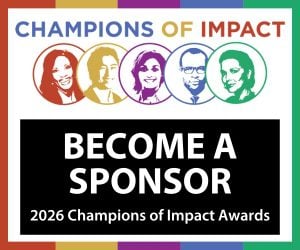A part of Indianapolis’ historic Kennedy-King neighborhood will be getting a $4.5 million lift, due to an investment announced last October by Mayor Joe Hogsett. The Monon 16 neighborhood, surrounding the intersection of 16th Street and the Monon Trail, was selected as the city’s first investment area for Lift Indy, a new community development program that assigns funding to targeted economic development opportunities. Monon 16 was chosen from among nine applicants to be the first Lift Indy project, with more projects to come over the next several years.
“Lift Indy is a creative way to raise neighbored quality of life in a way that is sustainable,” said Deputy Mayor David Hampton. “As we raise the level of business around certain neighbors, the idea is that it will trickle down to the most needy.”
Since the announcement, the development team has finalized their 2018 plans, which include building single-family housing and making updates to Dr. Martin Luther King Jr. Park. The ReDevelopment Group, King Park Development Corporation and David Weekley Homes have pledged to build at least 60 new homes in the Monon 16 area over the next three years. A mix of subsidized and market rate housing will be developed at the same time, and 20 percent of new homes will be awarded to affordable buyers thorough King Park Development Corporation.
king park
“This area is changing regardless of if it was selected (for Lift Indy) or not. There is a lot of market activity here, but we wanted to make sure the residents who have lived here for years are not displaced and are part of the process,” said Steven Meyer, executive director of the King Park Development Corporation. “Our philosophy is that while neighborhoods change, we are making sure it is still inclusive and there are opportunities for low-income people to be a part of great neighborhoods.”
According to The ReDevelopment Group’s website, market rate home prices will start at the low $300,000s, causing some community members to question the longevity of the neighborhood’s affordability.
Ariana Beedie, a local arts journalist, isn’t convinced low-income neighbors won’t be displaced.
“While there may be some representation from people who look like people from the original neighborhood, we worry our history is going to go away. When I think of people buying $300,000 homes, I wonder if they are going to think about (businesses such as) Kountry Kitchen or what ethnic population was here before,” said Beedie. “When I talk to my grandmother, we talk a lot about what population was here in the city, but new people, when they are coming in, they should know as well. Even as someone with a degree who is working in the city, I don’t always feel like my population is wanted. To me, it feels like Black people are being erased.”
Cynthia Hooks
Cynthia Hooks, a longtime resident of the Kennedy-King neighborhood and president of the Kennedy-King Neighborhood Association, inherited her home from her grandmother and deeply values the community’s rich history. She has been working hard to assure residents that their voices are being heard.
“A lot of times, people look at the changes and they are afraid of being displaced, or being pushed out with the taxes. At our last neighborhood association meeting they spoke about the changes to let them know their voice is needed,” said Hooks. “I know some of the elderly residents that are in need of home improvement funds and may not be aware of what we have to offer. We do everything we can to get the word out, to ask what questions they have.”
The concerns felt by residents of Kennedy-King are common in neighborhoods across America. As populations shift in once-low-income neighborhoods, developers and residents are left to scrutinize the ethical way to cultivate diversified development that protects longstanding residents while offering opportunities to new homeowners.
Community activist Satchuel Cole says there has been a ton of revitalization happening in her neighborhood, Willard Park, located a few blocks away from the popular St. Clair neighborhood. She feels it is important for developers to look at the intent behind changes.
“While revitalization needs to happen in several areas, when it does happen, it often leaves out or misplaces residents that are low income and minorities,” said Cole. “I often find that when an area starts the revitalization process, it isn’t because of the residents that are already there; it is because an outside group has taken interest in this area. If we want to revitalize without displacement, we have to center current residents in the process and not potential residents. Are you trying to revitalize or replace is always a question I ask when looking at improving an area. And are we improving it for future residents or the residents that have been there for decades?”
In the case of the Monon 16 area, Hampton wants the community to rest assured the current residents will not be forgotten.
“We always talk about development without displacement. These concerns are valid, and we keep that in the forefront of our minds in whatever we do,” said Hampton. “The concern that Lift Indy will leave behind the needy parts of our neighborhoods is something we are aware of, but it will not be the issue because we want to ensure that our most needy neighborhoods see improvement as well, and this is one of the ways we want to approach it.”
To learn more about Lift Indy and the Monon 16 neighborhood, visit monon16.org/lift-indy.
Kennedy King Park




